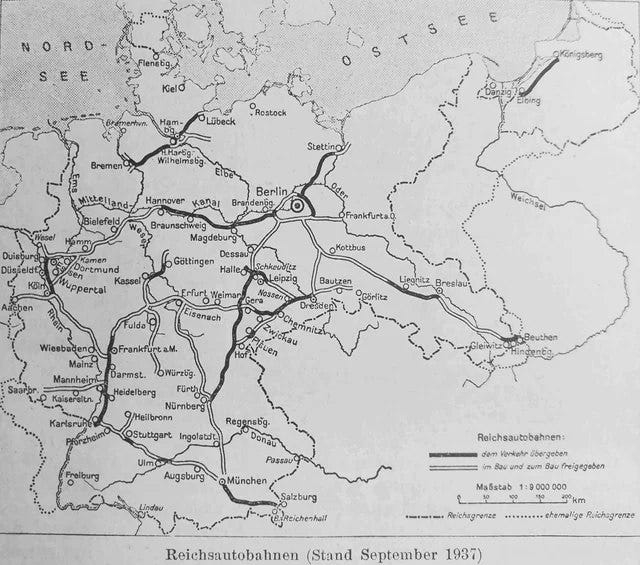The idea of an Autobahn first appeared during the Weimar Republic, when the Automobil-Verkehrs- und Übungsstraße (AVUS) was opened in Berlin on September 24, 1921. AVUS served as a high-speed testing ground and racetrack for automobiles, instead of a public highway. The first segment of Autobahn opened in 1932, linking Cologne and Bonn.
In 1933, Hitler seized the Autobahn project as a tool for creating employment, symbolizing national unity, and presenting Germany's technological progress. The Reichsautobahnen organization was formed under Fritz Todt, a civil engineer and head of road construction in Hitler's inner circle.
By 1936, over 130,000 workers were directly employed in construction, with another 270,000 in supporting industries. Routes were designed to pass through scenic German landscapes, reinforcing the idea of "Volksnah."
The Reichsautobahn was more than a highway system; it was a monument to national strength, unity, and ingenuity.







